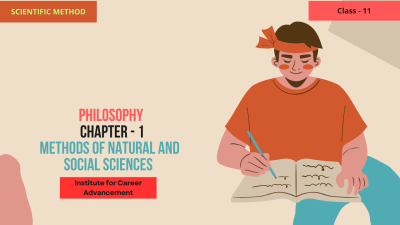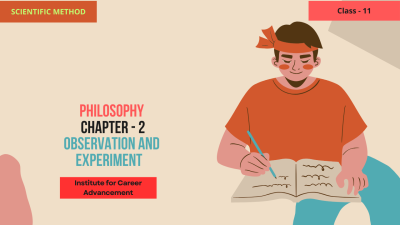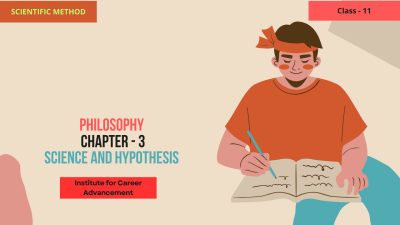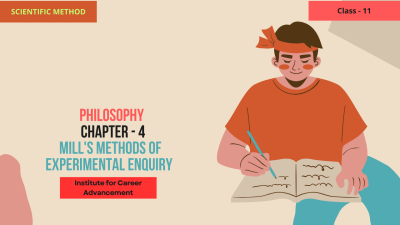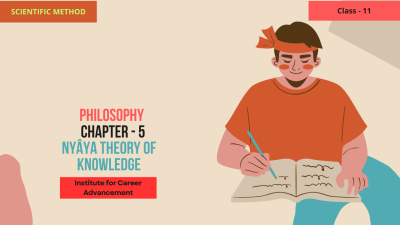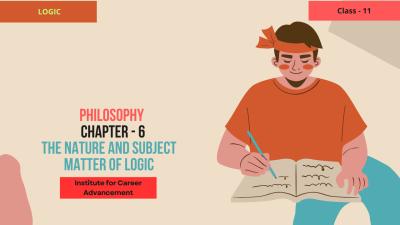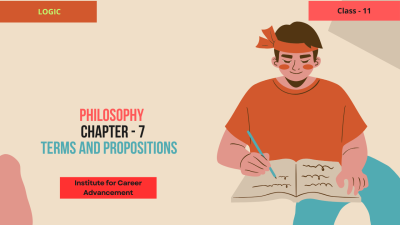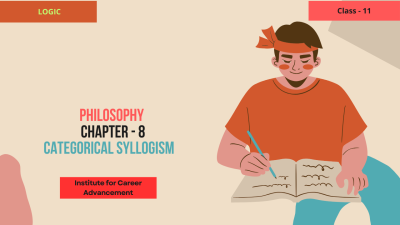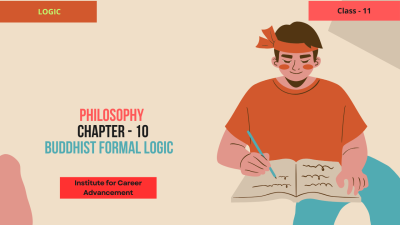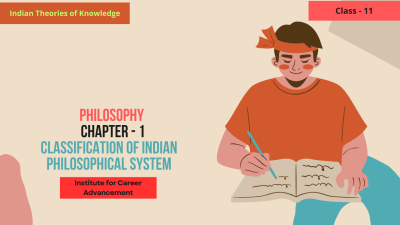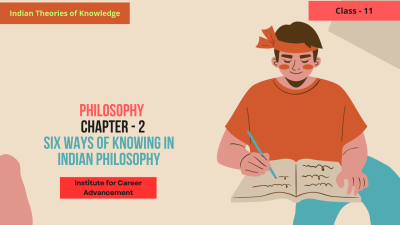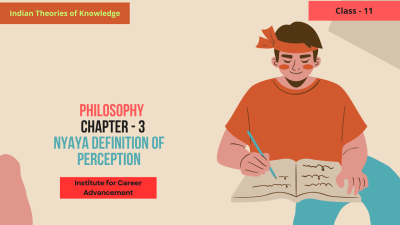Course description
David Hume, a central figure in empiricism, made significant contributions to our understanding of human knowledge and perception. In a Class 11 course, students study Hume's distinction between impressions and ideas, which form the basis of his theory of knowledge. Hume's exploration of how we come to know the world through sensory experiences is foundational to understanding the empiricist view of knowledge. Here's an overview of the topics typically covered under Hume's Impressions and Ideas in a Class 11 philosophy course.
1. Introduction to David Hume's Philosophy
Background: David Hume (1711–1776) was a Scottish philosopher and a prominent figure in the empiricist tradition. He is best known for his skepticism about human knowledge, particularly regarding the concepts of causality, self, and induction.
Empiricist Framework: Hume believed that all human knowledge is derived from experience and that the mind operates on the information received through the senses. His approach questioned many aspects of traditional metaphysics and epistemology.
2. The Concept of Impressions and Ideas
Impressions:
Definition: According to Hume, impressions are the raw data of experience, the direct, vivid, and forceful sensory perceptions that we have. Impressions include sensations like seeing, hearing, or touching an object, as well as emotions or passions (e.g., feeling joy or pain).
Characteristics: Impressions are immediate, intense, and come from our senses or emotions. For example, the experience of seeing the color red or feeling hot to the touch are impressions.
Ideas:
Definition: Ideas are the faint copies or representations of impressions in the mind. When we recall or think about something we've previously experienced, we are using ideas. These are less vivid and less forceful than impressions.
Characteristics: Ideas are derived from impressions. For example, thinking about the color red or recalling the feeling of heat is an idea, a mental image or concept that is not as immediate or vivid as the original impression.
3. The Relationship Between Impressions and Ideas
Origin of Ideas: According to Hume, all ideas are ultimately derived from impressions. The mind cannot create ideas from nothing; it can only combine, compare, or modify ideas that are copies of prior impressions.
Laws of Association: Hume proposed that ideas are connected by the mind through various associations, including:
Resemblance: Similar ideas tend to be associated with each other (e.g., thinking of a cat when seeing a dog because of their similarity as animals).
Contiguity: Ideas that occur together in time or space are linked (e.g., thinking of bread when thinking of butter because they are commonly found together).
Causality: The mind associates ideas of cause and effect based on experience (e.g., thinking of a flame when thinking of heat).
4. Hume’s Fork: Two Types of Knowledge
Relations of Ideas: These are propositions that are necessarily true, such as mathematical or logical statements (e.g., "2 + 2 = 4"). They are known through reason alone and do not rely on experience. Hume believed that such knowledge is a priori and independent of sensory experience.
Matters of Fact: These are propositions about the world that are contingent and based on experience, such as "The sky is blue" or "The sun rises in the east." These truths depend on sensory experience, and knowledge of them is derived from the impressions we have.
Hume's Skepticism: Hume was skeptical about how we come to know matters of fact. For example, he questioned how we could justify knowledge of causality or the external world since we can never directly observe causal connections; we only infer them based on experience.
5. Hume's Theory of Knowledge
Empirical Approach: Hume argued that all human knowledge comes from sensory experiences, or impressions, and that we build our knowledge of the world by forming ideas based on these impressions.
Problem of Causality: Hume famously questioned the concept of causality (cause and effect). He argued that we can never directly observe causal connections; instead, we infer them from the regular succession of events. This led him to challenge the idea that we can have certain knowledge about the world.
6. Criticism of Traditional Metaphysics
Rejection of Innate Ideas: Hume rejected the idea of innate knowledge, a concept that had been proposed by rationalists like Descartes. According to Hume, there are no innate ideas; all knowledge must come from experience.
Skepticism about Causality and Induction: Hume was skeptical about the justification of causal reasoning. Since we cannot directly observe causality, he argued that our belief in cause and effect is based on habit and experience, not rational certainty.
ডেভিড হিউম, অভিজ্ঞতার একজন কেন্দ্রীয় ব্যক্তিত্ব, মানুষের জ্ঞান এবং উপলব্ধি সম্পর্কে আমাদের বোঝার ক্ষেত্রে উল্লেখযোগ্য অবদান রেখেছিলেন। একাদশ শ্রেণির একটি কোর্সে, শিক্ষার্থীরা হিউমের ধারণা এবং ধারণার মধ্যে পার্থক্য অধ্যয়ন করে, যা তাঁর জ্ঞানের তত্ত্বের ভিত্তি গঠন করে। সংবেদনশীল অভিজ্ঞতার মাধ্যমে আমরা কীভাবে বিশ্বকে জানতে পারি সে সম্পর্কে হিউমের অন্বেষণ জ্ঞানের অভিজ্ঞতাগত দৃষ্টিভঙ্গি বোঝার ভিত্তি। এখানে একাদশ শ্রেণির দর্শনের কোর্সে হিউমের ইমপ্রেশনস অ্যান্ড আইডিয়াজের অধীনে অন্তর্ভুক্ত বিষয়গুলির একটি সংক্ষিপ্ত বিবরণ রয়েছে। 1টি। ডেভিড হিউমের দর্শনের ভূমিকা ডেভিড হিউম (1711-1776) একজন স্কটিশ দার্শনিক এবং অভিজ্ঞতাত্ত্বিক ঐতিহ্যের বিশিষ্ট ব্যক্তিত্ব ছিলেন। তিনি মানব জ্ঞান সম্পর্কে তাঁর সংশয়বাদের জন্য সবচেয়ে বেশি পরিচিত, বিশেষত কার্যকারণ, স্ব এবং আবেগের ধারণা সম্পর্কে। অভিজ্ঞতাসম্পন্ন কাঠামোঃ হিউম বিশ্বাস করতেন যে সমস্ত মানব জ্ঞান অভিজ্ঞতা থেকে উদ্ভূত হয় এবং ইন্দ্রিয়ের মাধ্যমে প্রাপ্ত তথ্যের উপর মন কাজ করে। তাঁর দৃষ্টিভঙ্গি ঐতিহ্যবাহী অধিবিদ্যা এবং জ্ঞানতত্ত্বের অনেক দিক নিয়ে প্রশ্ন তুলেছিল। 2. ধারণা এবং ধারণার ধারণা ইমপ্রেশনঃ সংজ্ঞাঃ হিউমের মতে, ইমপ্রেশন হল অভিজ্ঞতার কাঁচা তথ্য, প্রত্যক্ষ, প্রাণবন্ত এবং শক্তিশালী সংবেদনশীল উপলব্ধি যা আমাদের রয়েছে। ছাপগুলির মধ্যে রয়েছে কোনও বস্তু দেখা, শোনা বা স্পর্শ করার মতো সংবেদনগুলি, সেইসাথে আবেগ বা আবেগ (e.g., আনন্দ বা ব্যথা অনুভব করা) বৈশিষ্ট্যঃ প্রভাবগুলি তাৎক্ষণিক, তীব্র এবং আমাদের ইন্দ্রিয় বা আবেগ থেকে আসে। উদাহরণস্বরূপ, লাল রঙ দেখার বা স্পর্শের সময় গরম বোধ করার অভিজ্ঞতা হল ছাপ। আইডিয়াঃ সংজ্ঞাঃ ধারণাগুলি হল মনের মধ্যে ছাপের ক্ষীণ অনুলিপি বা উপস্থাপনা। আমরা যখন এমন কিছু স্মরণ করি বা চিন্তা করি যা আমরা আগে অনুভব করেছি, তখন আমরা ধারণাগুলি ব্যবহার করি। এগুলি ছাপের তুলনায় কম প্রাণবন্ত এবং কম শক্তিশালী। বৈশিষ্ট্যঃ ধারণাগুলি ছাপ থেকে উদ্ভূত হয়। উদাহরণস্বরূপ, লাল রঙ সম্পর্কে চিন্তা করা বা তাপের অনুভূতি স্মরণ করা একটি ধারণা, একটি মানসিক চিত্র বা ধারণা যা মূল ছাপের মতো তাৎক্ষণিক বা প্রাণবন্ত নয়। 3. ধারণা এবং ভাবনার মধ্যে সম্পর্ক ধারণার উৎপত্তিঃ হিউমের মতে, সমস্ত ধারণা শেষ পর্যন্ত ছাপ থেকে উদ্ভূত হয়। মন শূন্য থেকে ধারণাগুলি তৈরি করতে পারে না; এটি কেবল সেই ধারণাগুলিকে একত্রিত, তুলনা বা সংশোধন করতে পারে যা পূর্বের ছাপগুলির অনুলিপি। সমিতির আইনঃ হিউম প্রস্তাব করেছিলেন যে ধারণাগুলি বিভিন্ন সমিতির মাধ্যমে মন দ্বারা সংযুক্ত থাকে, যার মধ্যে রয়েছেঃ সাদৃশ্যঃ অনুরূপ ধারণাগুলি একে অপরের সাথে যুক্ত হতে থাকে (e.g., প্রাণী হিসাবে তাদের সাদৃশ্যের কারণে একটি কুকুর দেখার সময় একটি বিড়ালের চিন্তাভাবনা) সামঞ্জস্যঃ সময় বা স্থানে একসাথে ঘটে যাওয়া ধারণাগুলি সংযুক্ত থাকে (e.g., মাখনের কথা চিন্তা করার সময় রুটির চিন্তাভাবনা কারণ তারা সাধারণত একসাথে পাওয়া যায়) কার্যকারণঃ মন অভিজ্ঞতার উপর ভিত্তি করে কারণ এবং প্রভাবের ধারণাগুলি সংযুক্ত করে (e.g., তাপের কথা চিন্তা করার সময় একটি শিখা সম্পর্কে চিন্তাভাবনা) 4. হিউমের কাঁটাচামচঃ দুই ধরনের জ্ঞান ধারণার সম্পর্কঃ এগুলি এমন প্রস্তাবনা যা অপরিহার্যভাবে সত্য, যেমন গাণিতিক বা যৌক্তিক বিবৃতি (e.g., "2 + 2 = 4") তারা কেবল যুক্তির মাধ্যমেই পরিচিত এবং অভিজ্ঞতার উপর নির্ভর করে না। হিউম বিশ্বাস করতেন যে এই ধরনের জ্ঞান একটি প্রাথমিক এবং সংবেদনশীল অভিজ্ঞতা থেকে স্বাধীন। বাস্তব বিষয়ঃ এগুলি বিশ্ব সম্পর্কে প্রস্তাবনা যা আকস্মিক এবং অভিজ্ঞতার উপর ভিত্তি করে, যেমন "আকাশ নীল" বা "সূর্য পূর্ব দিকে উদয় হয়"। এই সত্যগুলি সংবেদনশীল অভিজ্ঞতার উপর নির্ভর করে এবং সেগুলির জ্ঞান আমাদের ছাপ থেকে উদ্ভূত হয়। হিউমের সংশয়বাদঃ আমরা কীভাবে সত্যের বিষয়গুলি জানতে পারি সে সম্পর্কে হিউম সংশয়ী ছিলেন। উদাহরণস্বরূপ, তিনি প্রশ্ন করেছিলেন যে আমরা কীভাবে কার্যকারণ বা বাহ্যিক জগতের জ্ঞানকে ন্যায়সঙ্গত করতে পারি কারণ আমরা কখনই সরাসরি কার্যকারণ সংযোগগুলি পর্যবেক্ষণ করতে পারি না; আমরা কেবল অভিজ্ঞতার ভিত্তিতে সেগুলি অনুমান করি। 5. হিউমের জ্ঞানের তত্ত্ব অভিজ্ঞতাগত দৃষ্টিভঙ্গিঃ হিউম যুক্তি দিয়েছিলেন যে সমস্ত মানব জ্ঞান সংবেদনশীল অভিজ্ঞতা বা ছাপ থেকে আসে এবং আমরা এই ছাপগুলির উপর ভিত্তি করে ধারণা তৈরি করে বিশ্ব সম্পর্কে আমাদের জ্ঞান তৈরি করি। কার্যকারণের সমস্যাঃ হিউম কার্যকারণের ধারণা (কারণ এবং প্রভাব) নিয়ে বিখ্যাতভাবে প্রশ্ন তুলেছিলেন। তিনি যুক্তি দিয়েছিলেন যে আমরা কখনই সরাসরি কার্যকারণ সংযোগগুলি পর্যবেক্ষণ করতে পারি না; পরিবর্তে, আমরা ঘটনাগুলির নিয়মিত উত্তরাধিকার থেকে সেগুলি অনুমান করি। এটি তাকে এই ধারণাকে চ্যালেঞ্জ করতে পরিচালিত করেছিল যে আমরা বিশ্ব সম্পর্কে নির্দিষ্ট জ্ঞান অর্জন করতে পারি। 6টি। ঐতিহ্যবাহী পদাঙ্কবিজ্ঞানের সমালোচনা সহজাত ধারণার প্রত্যাখ্যানঃ হিউম সহজাত জ্ঞানের ধারণা প্রত্যাখ্যান করেছিলেন, যা ডেসকার্টেসের মতো যুক্তিবাদীদের দ্বারা প্রস্তাবিত হয়েছিল। হিউমের মতে, কোনও সহজাত ধারণা নেই; সমস্ত জ্ঞান অবশ্যই অভিজ্ঞতা থেকে আসতে হবে। কার্যকারণ এবং প্রবণতা সম্পর্কে সংশয়বাদঃ হিউম কার্যকারণ যুক্তির ন্যায্যতা সম্পর্কে সংশয়ী ছিলেন। যেহেতু আমরা কার্যকারণকে সরাসরি পর্যবেক্ষণ করতে পারি না, তাই তিনি যুক্তি দিয়েছিলেন যে কারণ এবং প্রভাবের প্রতি আ







